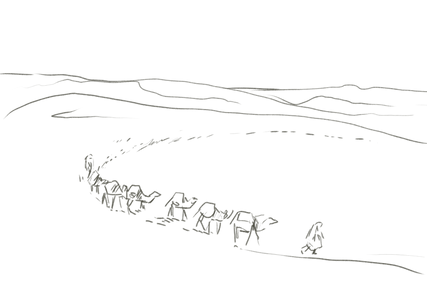
History of Noma in a nutshell

The country of Noma was founded about 10 centuries ago on the coast of the country. The people survived mostly by fishing and farming local vegetables. Their civilization slowly evolved and expanded further into the sea. During this time they were able to build wooden boats. They believed spirits and nymphs controlled nature, the sea and the land. There was also a theory that the dead came back as animals.

In the year 4.257 an earthquake in the surrounding sea caused a major tsunami that wiped out most of the civilization. This changed the land of Noma forever. The Nomas who managed to survive the tsunami believed that evil spirits were the cause of the catastrophe and abandoned the coast forever. Since then they have been travelling throughout the country with their animals depending on the weather. After the tsunami, the south became extremely dry during summer and the winters in the north were below freezing point. The Nomas rebuilt their towns in the mainland that were still open to all who lived there. Some of them settled in the midland near oases where the weather was good all year and farmed the land.

For the next thousand years, the citizens of Noma built small towns surrounding the most important fishing spots. The towns were built to host families that travelled through. Travellers could use the houses, build in the towns, for free. The houses that were empty could be used by the next travellers and when they moved to the next town, the cycle repeated itself. The Nomas were peaceful people with a mostly matriarchal community but there was still equality between the genders.

